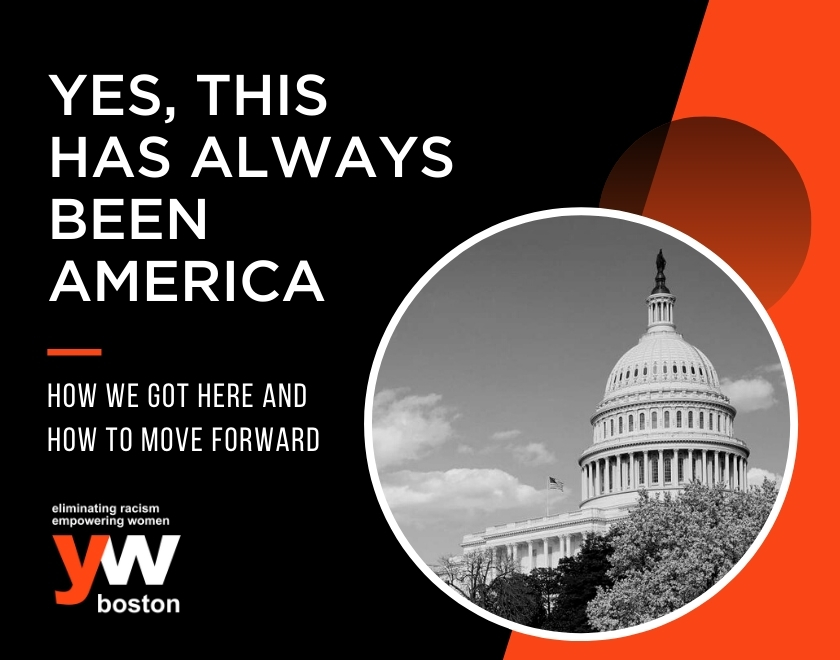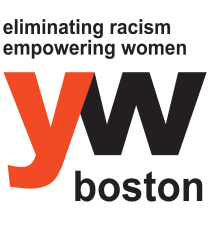
January 25, 2021
Yes, this has always been America: How we got here and how to move forward
On Wednesday, January 6, 2021, a group of White supremacists encouraged by President Donald Trump forced their way into the United States Capitol building. They were protesting the results of the 2020 presidential election, and organized an attempt to overthrow our acting government. This violent insurrection resulted in five deaths and threatened the lives of many of our elected officials.
To many Americans, the events of January 6 were shocking and felt unprecedented. Yes, we have never seen such a large group of protestors violently attack our Capitol building. However, their actions are rooted in long-standing beliefs and racist systems of violence that have threatened people of color, particularly Black Americans, throughout our nation’s history.
YWCA USA defines racialized violence as, a “Tool of oppression directed against communities of color, such as economic policies, cultural practices, political maneuvers, police brutality, war, criminal justice systems, hate crimes, genocide, and colonialism used in the service of acquiring, building, or maintaining institutional and structural power at the expense of people of color.”
The terrorist attack on the Capitol building was a highly visible example of a White Americans using violence in an attempt maintain power they believe was under attack. This is not new. The roots of this violence preceded Donald Trump’s presidency and will not disappear with the inauguration of a new president. It is up to us to continue to address the systemic racism at its core. In order to do this, we must recognize other forms of racialized violence in American history, and how that impacts our systems today. In better understanding how we got here, we will be better prepared to move forward.
A history of seizing and maintaining power through physical violence
While this month’s rioters did not succeed in overthrowing the government, the United States has experienced one successful coup. It, too, was driven by White American’s racial resentment. In 1898, Wilmington, North Carolina was seen as one of the most progressive areas of the South, with an integrated city government and a flourishing Black middle class. The Republicans, largely Black, fused political parties with the Populist party, threatening the power of the segregationist Democrats. On election day, a White supremacist mob intimidated Black voters, and the following day they published the “White Declaration of Independence,” forced the mayor to resign, and killed at least 60 residents. More than 100 Black government officials were forced out of their roles. In the following decades, Black voter registration plummeted and a Black Wilmington resident did not serve in public office again until 1972.
One of the most horrific examples of mass racial violence in American history was the Tulsa race massacre. In 1921, most of Tulsa’s Black residents lived in a prosperous neighborhood Greenwood deemed “Black Wall Street.” After a White woman accused a Black teenager of sexual assault, thousands of White rioters marched through Greenwood, destroying businesses and burning down homes. Within 18 hours, upwards of 300 people were killed and over 8,000 were left homeless. It was not an attempted coup, but similarly, the massacre resulted from those who felt threatened by the power Black residents were gaining. Just as they felt the assault accusation was a reason to enact terror, in 2021, the insurrection claimed to be working in support of Donald Trump re-election. Both reasons attempt to mask the White supremacist motivations of their violence.
And not too long ago, mass racialized violence by citizens was enacted here in Boston. In 1974, Boston was required to desegregate schools by busing White students to primarily Black schools and Black students to primarily White schools. Protests erupted, and Black students were attacked as White protestors spit on them, threw eggs and bricks at their buses, and called them racial epithets. Nowadays, it is referred to as the Boston Busing Crisis, not because the plan was a crisis, but because of the high levels of racial violence that resulted when White parents felt that Black students would have the same access to education that their children did.
Violence is interwoven in our systems
The examples of mass racialized violence above illustrate the precedented nature of the insurgency on January 6th, but they are also only the tip of the iceberg in the ways racism is interwoven into daily life. Racialized violence is a form of collective violence, which describes the use of violence by one group enacted on another.
There are three major forms of collective violence: social, economic, and political. Social violence seeks to control the social welfare of its victim group. One example of social violence is the disproportionate number of Black drivers stopped for traffic violations, and the related high rates of Black defendants sentenced to harsher sentences than White defendants. Economic violence restricts groups’ gaining and use of capital, and has been enacted through wage gaps and housing discrimination, for example. Lastly, political violence works to keep certain groups from gaining political power. People of color, and especially Black Americans, have been subjected to voter suppression through voter intimidation, Voter ID laws, redistricting, and more. You can learn more about these forms of violence by watching our webinar, Understanding Inequitable Systems of Violence.
We must repair the divide in our country and recognize that bothsidesism upholds systemic racism.
While forms of collective violence are rarely as high profile as that of the coup on January 6th, their roots are tied together in racism. American history is filled with both high-profile and insidious examples of racialized violence. We cannot expect this violence to end with the inauguration of a new presidential administration. If we move on too quickly from the events on January 6th, without interrogating the beliefs and structures that got us there, we will miss our call to action. Furthermore, by permitting ‘bothsidesism,’ the term for treating all political views as holding equal merit, we will be unable to recognize the systemic racism embedded in many past, current, and future policy decisions. A deeply polarized country will only collapse upon itself. We must commit to rooting out systemic racism and ending racialized violence.
If you are looking for ways to start, learn from our blog post, How to take action against racism right now. Continue to learn about how systemic racism shows up in your interactions and institutions, and how it harms or benefits you and those in your community. In order to advance equitable change within your workplace, learn more about our Diversity, Equity & Inclusion Services such as InclusionBoston.
Join our advocacy efforts for a more equitable Boston and Massachusetts by signing up for our advocacy mailing list. Recognizing the United States’ history of racialized violence is a crucial step toward committing ourselves to take action toward a more equitable future.
______
About YW Boston
As the first YWCA in the nation, YW Boston has been at the forefront of advancing equity for over 150 years. Through our DE&I services—InclusionBoston and LeadBoston—as well as our advocacy work and F.Y.R.E. Initiative, we help individuals and organizations change policies, practices, attitudes, and behaviors with a goal of creating more inclusive environments where women, people of color, and especially women of color can succeed.
As part of that work, we are helping organizations prioritize Diversity, Equity & Inclusion and become socially connected while staying physically distant. During this time, YW Boston is providing organizations with digital workshops and resources to help them better understand the challenges faced by their employees. For more information, please contact Sheera Bornstein at sheera@ywboston.org.

